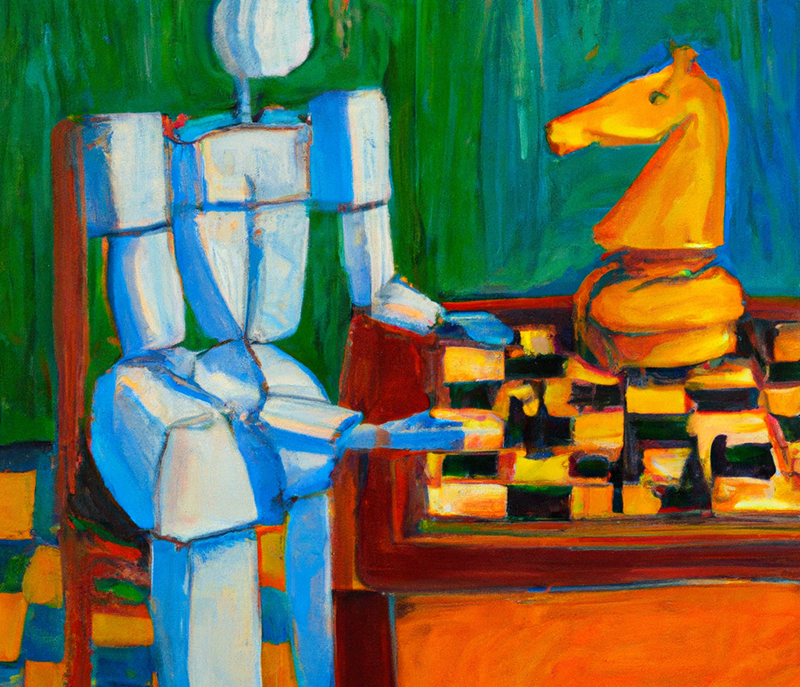Losing the fear of error
Historically, error has been identified as a negative situation that we should avoid at all costs. It is a generalised and cross-cutting concept in all spheres of society. If you make a mistake in sport, the consequence is a penalty. In the field of education, it is a principle characteristic of currents related to behavioural psychology, those based on simple trial and error processes. An error that, from Thorndike’s operant conditioning, is considered to be followed by a punishment that eradicates the behaviour manifested.
As a consequence, reflecting on the error is the last thing on our minds. It is more common to want to forget, because error, more often than not, is synonymous with failure. It is a fairly widespread, but not universal, conception.

There are views that advocate not stigmatising error, believing that, properly handled, it could be the greatest learning opportunity. Seymour Papert, disciple of Jean Piaget, renowned author in the field of educational psychology and pedagogy, remarks that school teaches that mistakes are bad; the last thing you want to do is examine them, dwell on them, or reflect on them. The philosophy of purification proposes the opposite attitude. Mistakes benefit us because they lead us to study what happened and to understand what did not work properly through a process of correction. This contribution is contained in his theory called constructionism.
Along the same lines, Edgar Morin, in his work The Seven Necessary Wisdoms for the Education of the Future, points out that there is no knowledge that is not to some extent threatened by error and illusion.
The rise of information and communication technologies (ICTs) has contributed to a loss of fear of making mistakes; making mistakes on a digital level sometimes creates the feeling of a lesser evil. The generations that Mark Prensky calls digital natives seem to tend to be more daring in their digital interactions, perhaps being less aware of the consequences of their actions in these scenarios.
What is clear is that losing the fear of making mistakes, as Ken Robinson says, is one of the ingredients for allowing creativity to be unleashed. Mastering the art of making mistakes creates the conditions for the development of many of the soft skills that organisations such as the World Economic Forum recognise as crucial to an individual’s socio-occupational success in 21st century society. Perseverance, flexibility, adaptation to diverse environments, communication of impact, among others, are skills that require the loss of respect for error, showing rebellion based on critical reasoning capable of deciphering its triggers, in order to submit them to an analysis that allows us to propose alternative solutions that lead to success.
How do we work on these skills in a society where we spend an enormous amount of time in connected digital environments? It is precisely at this level that we can turn to the movement known as computational thinking (CT).
The rise of information and communication technologies (ICTs) has contributed to a loss of fear of making mistakes.
What is computational thinking and why is it important to learn it?
Jeannette Wing defined computational thinking as “thinking that involves solving problems, designing systems and understanding human behaviour, using the fundamental concepts of computer science” The essence is to solve problems by applying computer scientist thinking. Karen Brennan and Mitchel Resnick offered an operational definition of the concept and presented a framework that classifies CT along three dimensions: concepts, practices and perspectives. By computational concepts they refer to the main ideas we learn when we develop our CT – sequences, parallelisms, loops, conditionals, events, data and operators. On the other hand, the practices – being incremental and iterative, testing and fixing, reusing and remixing, and abstracting and modularising – would involve problem-solving with a computational character, developing procedures that use the computational concepts captured in the previous dimension. These practices will focus on thinking and learning processes, i.e. we move from what we learn to how we learn. Finally, the perspectives – expressing, connecting and questioning – imply a level of problem-solving with a more critical stance towards the digital tools we handle, being more effective in their selection and application.
Definitely, in a society increasingly mediated by ICTs, where the development of soft skills is crucial, the CT approach becomes fundamental to prepare an empowered individual capable of actively participating in his or her immediate environment.
The school that prepares for life cannot remain oblivious to the promotion of computational thinking. Today, we spend a great deal of time interacting with machines. It is crucial to understand the language they use to communicate with us, a programmed sequential language that foresees the actions we will need to take in order to provide us with a response that is as aligned as possible.
It is clear that CT work has a clear and direct link with programming, but it is important to understand that it is not only about mastering this practice, but, as we have already mentioned, about being able to solve problems of various kinds by applying a computer scientist’s thinking.
Computational thinking is that thinking that involves solving problems, designing systems and understanding human behavior, making use of the fundamental concepts of computer science.
An approach proposal
Working with computational thinking in educational environments must follow a series of pedagogical principles that ensure an experience that connects the school with the learner’s immediate environment.
The New School movements and, above all, the pragmatism of John Dewey, laid the foundations for what we know today as action pedagogy, an educational approach that focuses on practical experience and action as forms of learning. Action pedagogy presents challenges whose resolution involves direct interactions with the object of learning and where the control of the maturational level of the learner is of vital importance. Returning to Papert’s constructionism, early CT development is first worked with tangible devices such as robots, and later with programming languages, as a vehicle for abstract thinking and as a means to express oneself and to create.
One of the experiences of CT work in educational environments that is highly aligned with these pedagogical postulates is the ProFuturo Foundation project. A proposal that addresses the development of the CT from the approach of Kotsopoulos, Floyd, Khan, Namukasa, Somanath, Weber, and Yiu (2017). Here, the authors classify the pedagogical experiences in dealing with CT work into four types. The so-called unplugged, which are experiences that do not require computers and are based on the exploration and application of CT concepts in an unplugged way. On the other hand, there would be tinkering or prototyping experiences, which focus on research leading to determining what could be created or modified, without the aim of creating it. Also, noteworthy are the proposals of the making type, which focus on prototyping processes based on reflexive dynamics. Finally, we find remixing activities, those in which elements from other dynamics or objects are reused to submit them to a process of adaptation that endows them with other characteristics and makes them useful for solving problems in contexts different from the initial ones. The latter practice is also often referred to as hacking.
We would be faced with a series of training itineraries based on postulates that range from moments that seek to transform the classroom, through sequences that aim to have an impact on the school’s immediate environment, to the development of proposals based on undertaking projects from the school. The methodological approach starts from experiences in which the teacher guides the student with a constant presence, and moves on to postulates with greater autonomy on the part of the learner in the resolution of the CT problems. It is based on principles characteristic of Roger Shank’s Learning by Doing, also on the aforementioned constructionism of Seymour Papert and, in its most evolved state, on the resolution of maker projects (the latter linked to the Maker Movement and the MIT’s (Massachusetts Institute of Technology) digital fabrication labs project, Fab Labs).
In this video, you can learn more about computational thinking and how to approach it in education.
Referencias
Brennan, K. y Resnick, M. (2012): “Using artifact-based interviews to study the development of computational thinking in interactive media design”, en Annual American Educational Research Association meeting. Vancouver: s.n.,
Dewey, J. (1995): Democracia y Educación: una introducción a la filosofía de la educación. Madrid, Ediciones Morata. ISBN 8471123916.
Kotsopòulos, D., Lisa, F., Steven, K., Immaculate Kizito, N., Sowmya, S., Weber, J. y Yiu, C. (2017): “A Pedagogical Framework for Computational Thinking”, en Springer International Publishing, vol. 3, no. 2, pp. 154-171.
Papert, S. (1980): Mindstorms: Children, Computers and Powerful Ideas. Nueva York, Basic Books, Inc. ISBN 0-465-04627-4.
Prensky, M. (2011): Enseñar a nativos digitales. Madrid, Ediciones SM.
Robinson, K. (2010): El Elemento. Descubrir tu pasión lo cambia todo. Barcelona, Debolsillo. ISBN 8499083900
Shank, R. (1995): “What We Learn When We Learn by Doing”, en S.l.: Institute for the Learning Sciences Northwestern University. 60.
Wing, J. (2006): “Computational thinking”, en Communications of the ACM, vol. 49, no. 3, pp. 33-35.






